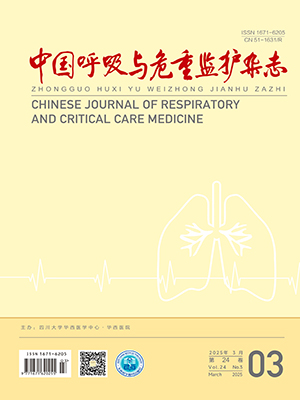Objective To investigate the effects of immunoliposomes containing vasohibin on pulmonary fibrosis in mice. Methods Liposomes containing vasohibin plasmids were prepared by reverse phase evaporation technique, then combined with VWF antibody to form the immunoliposomes. 30 mice were randomly divided into a control group, a model group, and a vasohibin group. The mice in the model group and the vasohibin group were nasally instilled with bleomysin to induce pulmonary fibrosis. After 3 days, the mice in the vasohibin group were nasally instilled with the immunoliposomes containing vasohibin. The mice were all sacrificed after 14 days. Lung tissue sections were stained by HE and CD31 immunohistochemistry staining. The level of hydroxyproline in lung was measured by colorimetry. Results The results
demonstrated that the vasohibin immunoliposome could markedly decrease angiogenesis with the number of ( 46 ±16) compared to ( 78 ±12 ) , and decrease fibroblast proliferation with ( 0. 84 ±0. 12) μg/mg compared to ( 1. 39 ±0. 23) μg/mg. Conclusion The vasohibin immunoliposome can attenuate pulmonary
fibrosis and provide a novel strategy for clinical application in the future.
Citation: WANG Xingsheng,WU Xueling,YANG Xuemei,ZHAO Yunfeng,XUZhi,CUI Shehuai. Immunoliposomes Containing Vasohibin Inhibit Pulmonary Fibrosis in Mice. Chinese Journal of Respiratory and Critical Care Medicine, 2010, 9(5): 529-531. doi: Copy
Copyright © the editorial department of Chinese Journal of Respiratory and Critical Care Medicine of West China Medical Publisher. All rights reserved




